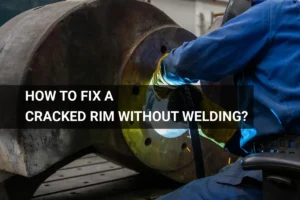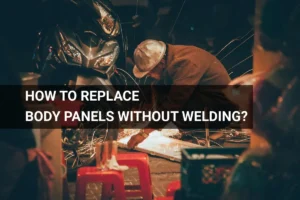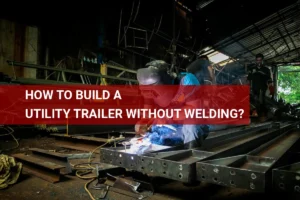Where Can I Get Something Welded? – Find a Welder, Learn, and Explore Options
Published on: June 27, 2025 | Last modified: March 4, 2025
By: Mark Carter
Welding is the process of joining materials together, usually metals, by melting them with heat. This creates a strong bond as the materials cool and solidify.
It’s a question I’ve heard often: where can I get something welded? Knowing the right place is key to ensuring quality work. From my experience, picking a reliable shop can save you both time and money in the long run.
In this guide, I’ll cover various topics—what welding is, types of welding, prerequisites for welding, and steps for getting something welded. Additionally, we’ll discuss essential precautions, locations to weld something, plus other vital factors and unique issues in welding. You’ll also find valuable tips about aftercare, inspection, and the benefits of welding along with answers to commonly asked questions like where can I find a welder near me.
Contents
- Where Can I Get Something Welded?
- What is Welding?
- Types Of Welding: Where to Get Something Welded
- Prerequisites for Welding
- Steps for Getting Something Welded
- Precautions
- Types Of Places to Get Something Welded
- Factors Affecting Where You Can Get Something Welded
- Common Misconceptions About Welding Services
- Where to Look for Local Welders
- Unique Issues in Welding
- Aftercare, Inspection, and Advanced Tips
- Benefits Of Welding
- Use Cases Of Welding
- Other Options for Getting the Same Results As Welding
- Frequently Asked Questions (FAQs)
- Conclusion
- Additional Reading
Where Can I Get Something Welded?
Welding is joining materials, often metals, together. So, where can I get something welded? Look for local shops or mobile welders. Typically, costs range from $50 to $200, based on complexity. Common applications are repairs and custom fabrications, including diy welding projects that many enthusiasts undertake.
When considering welding on zinc-coated materials, understanding the specific challenges of welding zinc plated steel is crucial for ensuring strong joints and structural integrity.
What is Welding?
Welding is the process of joining two or more materials, usually metals or thermoplastics, by melting and fusing them. This usually occurs at temperatures above 1,500°F (815°C), creating a strong bond. About 80% of manufactured goods involve welding. In 2021, the global welding equipment market exceeded $19 billion (USD).
If you’re wondering where to get something welded, it’s quite common. I’ve found welders for projects before. You can usually locate a nearby welder with a quick online search or by asking friends.
I found welding helpful for work, especially when I needed to repair equipment on the job site. I remember tracking down a local welder; it made a big difference. If you’re curious about welding options, explore your community—there’s often a shop or skilled worker nearby ready to assist.
Types Of Welding: Where to Get Something Welded
What welding types are available for your projects?
-
MIG Welding
MIG welding uses a continuous wire feed to create a weld. You can find MIG services at local shops like Jrods Welding & Fabrication LLC, open 24 hours. To get started, bring your metal pieces, discuss your project with the welder, and they’ll assist you throughout the process.
-
TIG Welding
TIG welding is precise and works well for thin materials. Check out Leeco & Jerry Welding, known for quality in Capitol Heights, MD. To use their services, bring your items and expect detailed work tailored to your specifications.
-
Stick Welding
Stick welding is strong and ideal for various metals. You can use local fabrication shops or mobile welding services. To get something welded, find a welder, describe your needs, and they’ll handle the stick process effortlessly.
-
Flux-cored Arc Welding
Flux-cored arc welding is suitable for outdoor jobs since it’s less affected by wind. Many contractors offer this, especially those with industrial equipment. To get service, contact a nearby welding company, show them your materials, and they’ll set up the flux-cored system.
-
Submerged Arc Welding
This method uses a granular flux cover, making it ideal for thick materials. For this, consider large-scale fabrication factories or specialized welder services. Coordinate with a facility that has submerged arc capabilities and discuss your project specifications.
So far we covered the different types of welding and where to get welding services. Next, let’s look at welding prerequisites.
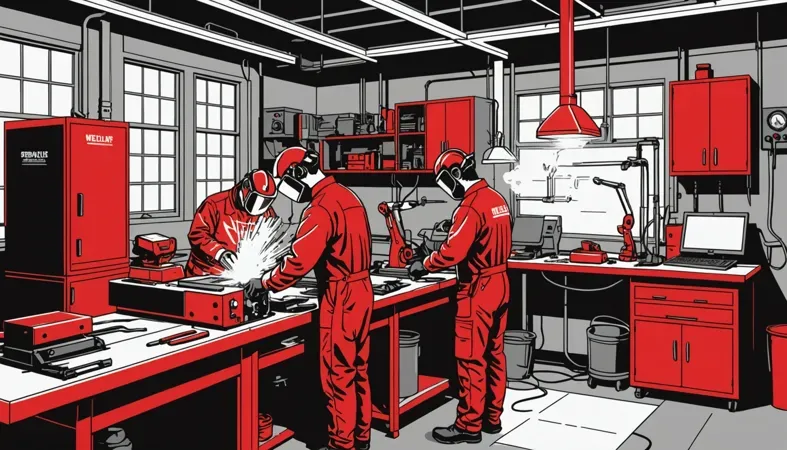
Prerequisites for Welding
What do you need to get started?
- Welding Machine: You’ll need a welding machine, like a Lincoln Electric Power MIG 210. It provides the heat needed to melt and join metal pieces.
- Welding Wire: Use welding wire like ER70S-6 for MIG welding. It’s crucial for creating a strong bond when fusing metals.
- Protective Gear: Have protective gear, such as a Miller Electric Classic Freestanding Helmet. This protects your eyes and face from sparks and UV rays.
- Cylinder Gas: A gas cylinder, such as an Argon tank, is necessary. It shields the weld from contaminants during the process.
- Work Surface: A solid work surface, like a welding table, is essential. It provides stability and keeps your materials secure while you work.
You should now have a good understanding of welding prerequisites. In the next part, we’ll discuss the steps for getting something welded.
Steps for Getting Something Welded
We’ll cover steps for finding the right place to get something welded. Follow these steps to ensure you find a reliable welding service.
-
Research Local Welding Services
Your first step is to search for welding services in your area. Use platforms like Google Maps, Yelp, or social media for reviews. Aim for places with at least a 4-star rating and check the number of reviews. You might find options like Leeco & Jerry Welding or Chung’s Welding, both with solid reputations.
Contact them directly to inquire about the services offered. Ask if they perform the specific type of welding you need, such as MIG, TIG, or stick welding. Ensure they have the right equipment and expertise for your project.
-
Get Quotes
Once you’ve narrowed down your choices, request quotes from at least three welding services. Most places will need to see your project to give a precise estimate. Prices can vary significantly; basic welding might range from $50 to $150 per hour. Include details about the project size and materials when requesting your quote.
Take time to compare these quotes. Look at not just the price but also the turnaround time and reputation. The cheapest option isn’t always the best; consider quality and reliability in your decision.
-
Schedule a Meeting
Arrange a face-to-face meeting with your top choices. This is a great opportunity to gauge their expertise. Bring your project ideas and be ready to discuss materials and techniques. I recommend visiting their shop to see their setup and equipment; it gives you a sense of their professionalism.
During the meeting, ask questions about their past projects and methods. It’s vital to ensure they’re the right fit for your specific needs, especially for unique welding jobs. Gaining insights from them can help you understand the welding process better.
-
Finalize Your Choice
After gathering all the information, it’s time to decide. Review the pros and cons of each service you consulted. Consider factors like price, expertise, and your comfort level with them. Don’t rush; choosing the right welder can save you time and hassle later!
Once you choose a welder, confirm the details. Ensure you understand the timeline, costs, and any warranties. Having a written contract or agreement helps protect you and ensures clarity moving forward.
-
Build a Relationship
Now that you’ve completed your project, consider building a relationship with your welder. If the work went well, they can be a valuable resource for future repairs or projects. If their service impressed you, you’ll want their expertise down the line.
Keep their contact information and share your experience with friends. Quality welders appreciate referrals, which can lead to discounts or priority service later. Building a good relationship makes everything related to welding easier!
That covers the steps for getting something welded. Let’s now take a look at the necessary precautions.
Precautions
Here are essential safety tips for welding services.
- Inspect Equipment: Regularly check for damage. I recommend the Lincoln Electric VIKING 3350 welding helmet for maximum protection.
- Ventilation: Ensure good air circulation. Poor ventilation can lead to toxic fume buildup, especially when welding aluminum.
- Flammable Materials: Remove all flammable items. Welding sparks can travel over 10 feet (3 Meters), igniting nearby objects!
- Personal Protective Gear: Always wear protective gloves and goggles. Tillman Welding Gloves are ideal for hand and arm safety.
Remember, staying safe during welding tasks is crucial for your well-being.
Types Of Places to Get Something Welded
Let’s look at where you can get something welded. We’ll cover local welding shops, metal fabrication facilities, construction sites, automotive repair shops, and custom fabrication services.
-
Local Welding Shops
Local welding shops are small businesses focused on welding projects. They often handle custom jobs and repairs. You can usually get quotes based on an hourly rate of $100-$150.
-
Metal Fabrication Facilities
Metal fabrication facilities manage large-scale projects, often for construction or manufacturing industries. They produce intricate designs and structures, offering capabilities like CNC machining and MIG/TIG welding.
-
Construction Sites
Welding is essential on construction sites for building frameworks and structures. Welders may work with heavy equipment and high-strength materials. Construction welding can require 8-10 hours of continuous work to meet project deadlines.
-
Automotive Repair Shops
Automotive repair shops primarily use welding to repair parts, such as frames or exhaust systems. Techniques like MIG welding and plasma cutting are common in this field. These shops often have the skills for both small and large welds, making them a reliable choice for those looking to understand welding by industry.
-
Custom Fabrication Services
Custom fabrication services provide tailored solutions for unique projects. They work with various metals, such as aluminum, stainless steel, or carbon steel. Services can vary significantly, so ask about their past projects for insights!
We have now covered various types of locations for welding services. Next, we will examine the factors influencing welding site options.
Factors Affecting Where You Can Get Something Welded
What factors influence where you can get your items welded?
-
Availability Of Welders
The number of certified welders in your area affects your options. In some regions, a shortage of skilled welders results in longer wait times for service.
-
Cost Of Welding Services
Prices vary significantly based on location and type of welding. For example, the average cost for MIG (Metal Inert Gas) welding is about $85 to $150 per hour.
-
Proximity to Welding Facilities
Being close to a welding shop saves time and transportation costs. I recommend looking up local welders to find someone nearby to get your work done faster.
-
Type Of Material Being Welded
Different materials require different techniques. For instance, aluminum welding may need specialized equipment, affecting your options for service.
-
Complexity Of the Welding Project
More complex projects need more skilled welders and specialized equipment. These factors can limit your options, especially for intricate work.
That covers the factors influencing welding locations. Let’s now take a look at the unique challenges in welding.
Common Misconceptions About Welding Services
Many folks think welding is only for big industries. That’s not true! You can find welding services for small personal projects, too.
Another myth? That you need to own fancy equipment to get something welded. Not at all! Most shops have what they need.
Ever heard that welding’s too expensive? Well, costs vary. Simple jobs might only run you $20 to $100! It depends on size and material, so always ask for quotes.
Where to Look for Local Welders
Start by checking local directories or apps. Websites like Yelp or Google Maps can help you find nearby welding shops.
Ask around, too! Friends or family might know reliable welders. Word of mouth can lead you to some great services.
Don’t forget about social media! Local groups often share recommendations. You can find skilled welders right in your area.
Unique Issues in Welding
Here are some technical problems in welding you might face.
-
Material Compatibility
Welding dissimilar metals can create weak joints. Check the melting points and chemistry of the materials. Use filler metals designed for compatibility to solve this.
-
Welding Distortion
Welding can cause distortion from thermal expansion. I recommend clamping pieces to keep them in place during welding. This reduces stress and improves accuracy.
-
Heat-affected Zones
Welding generates heat that affects the metal around the weld. Monitor cooling rates. Pre- and post-welding treatments can reduce this issue.
-
Welding Defects
Welding defects, like cracks or porosity, may occur. Inspect your weld visually or with ultrasonic equipment to identify issues. Proper techniques and settings help eliminate defects.
We covered unique challenges in welding, including techniques and equipment. Next, we will cover aftercare, inspection, and advanced tips.
Aftercare, Inspection, and Advanced Tips
Here’s some advice on caring for your weld after work, inspecting it thoroughly, and elevating your welding game.
Aftercare Tips
After your welding project, clean the weld area immediately to prevent rust. Use a wire brush (Or Similar Tool) and apply a rust-inhibiting paint like 3M Rust Fighter at temperatures above 15°C (59°F). Also, check the surrounding area for chemicals that may compromise the weld joint. It’s crucial for welders to understand safety measures to prevent electric shock in welding.
Inspection
Inspection starts with checking for undercutting and carbon buildup. Use a magnifying tool with 5x magnification for better visibility. Pay attention to the bead width, aiming for 3-5 mm (0.12-0.20 Inches) on TIG welds. I use a Lincoln Electric Inspection Gauge for accurate measurements.
Expert Tips
I recommend experimenting with filler materials for complex projects, using ER70S-6 for mild steel. Maintain a steady hand with a travel speed of 300-500 mm/min (11.8-19.7 In/min) for optimal penetration. Finally, adjust your gas flow rate—10-15 cubic feet per hour (CFH) is efficient for MIG welding to avoid oxidation.
Benefits Of Welding
The main benefit of welding is its strength. I found it useful for work, especially when I needed to join heavy metal pieces securely.
Additionally, welding provides durability, versatility, cost-effectiveness, and quick repairs. You can weld various materials, from steel to aluminum, without spending a fortune.
Use Cases Of Welding
I’ve seen people use welding for repairs and fabrications. Its practical applications include:
- Aerospace: Welding’s crucial for manufacturing aircraft components. It ensures strength while reducing weight, making it popular due to strict safety standards.
- Automotive: Custom car modifications often require welding. It supports structural integrity and is widely used in DIY projects and professional designs.
- Art Installations: Artists create large sculptures using welded metals. This method produces durable, intricate designs that are popular in public art displays.
- Construction Equipment: Welding repairs heavy machinery like cranes and bulldozers. It’s effective for fixing structural failures and prolonging equipment life.
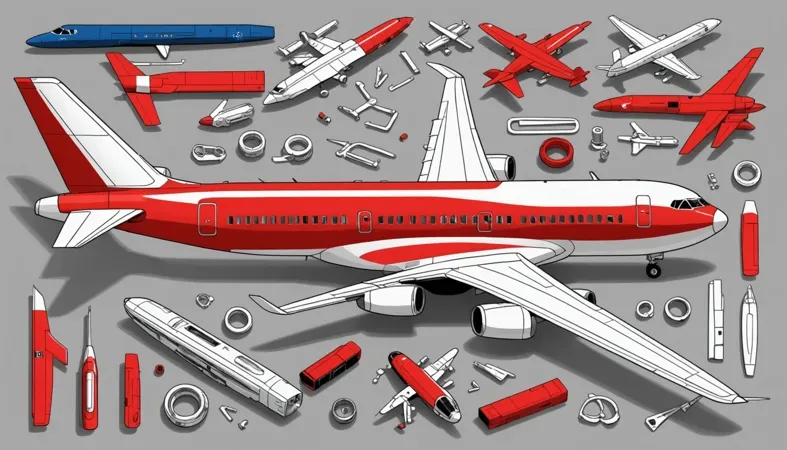
Other Options for Getting the Same Results As Welding
There are alternatives you can try instead of welding. For example, epoxy adhesives such as J-B Weld can bond metals effectively. In my professional journey, I’ve found that these adhesives work well for small repairs or crafts since they don’t require special equipment or skills.
If you’re looking for strength, consider using a mechanical fastener like bolts or rivets. They provide durable joints and are often easier to work with than welding. Plus, places like Leeco & Jerry Welding offer fab services for those who need extra help!
Frequently Asked Questions (FAQs)
Now let us look at some common questions I typically get asked.
Can You Weld Something at Home?
Yes, you can weld something at home. With the right equipment and safety measures, home welding is achievable for DIY enthusiasts. Portable welders range from $200 to $2,000, and simple projects can be completed with about 10 hours of practice.
What is the Cheapest Way to Weld?
The cheapest way to weld is using a stick welder. Stick welding reels in costs at about $300, which is more affordable than MIG or TIG welders. You can purchase electrodes for around $20 for 5 kg, making it a budget-friendly option for beginners. A crucial technique in welding is mastering how to weld uphill effectively which enhances the quality of vertical joints.
Is There a Way to Weld Without a Welder?
Yes, you can weld without a traditional welder by using methods like brazing or soldering. These methods utilize filler materials and don’t require high heat. They’re perfect for thin metal repairs and crafting, and you only need a propane torch which costs roughly $50.
How Much Does It Cost to Have a Welder Weld Something?
The cost to have a welder weld something typically ranges from $60 to $150 per hour. Factors like location, skilled labor, and complexity affect pricing. For simple tasks, you might spend around $100 to $300 total for completion. It is important to note that welding light can potentially harm sensitive equipment, such as cameras, due to intense UV exposure. For those interested in the effects of welding light on cameras, further exploration is advised.
Where Can I Learn Welding Near Me?
You can learn welding near you through local community colleges or trade schools. Many places offer short courses, typically lasting 4 to 12 weeks. Prices can range from $300 to $1,500, making it accessible for those eager to gain hands-on skills.
Where Can I Find a Welder Near Me?
You can find a welder near you through online directories or local classifieds. Popular platforms like Yelp or Angie’s List can connect you to certified welders in your area. Expect costs and credentials to vary greatly, so always check ratings.
Conclusion
We covered the basics of welding, types of welding, prerequisites, steps needed, and precautions to take. We also looked at various places to get something welded, factors influencing your choice, unique challenges, and aftercare tips. Lastly, we discussed the benefits and use cases of welding, as well as alternatives to achieve similar results.
So, where can you get something welded? You can look for local welding shops, fabrication centers, or even community colleges teaching welding classes. If you need additional advice, I’m here to help with more specific options based on your area.
If you’re eager to explore the subject further, I invite you to visit What is Welding for an in-depth look.
Additional Reading
- Canadian Welding Bureau (CWB): https://www.cwbgroup.org
- Lancaster, J. F. (1999). The Physics of Welding (2nd ed.). Oxford, UK: Pergamon Press.
Mark is a skilled welding engineer specializing in advanced metal joining technologies and process design. With a formal education in welding engineering and a background rooted in practical experience, Mark bridges the gap between theory and application. He is passionate about making technical concepts accessible, empowering welders to embrace innovation while mastering essential skills. Mark combines his scientific expertise with a commitment to supporting the welding community alongside his uncle, Joe.
DIY Welding, Find A Welder, Types Of Welding, Welding, Welding Safety, Welding Services



